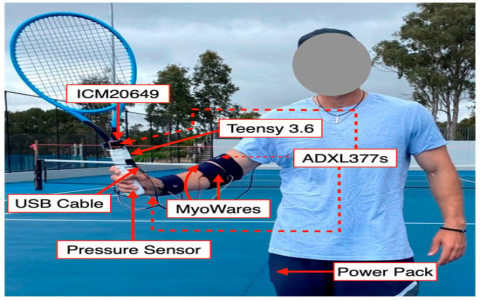In a world where mobility enhances the quality of life, innovative solutions are emerging, particularly for walkers. Recently, an exciting development has taken center stage: specialized tennis balls designed to improve mobility for those who rely on walkers. These tennis balls, which are not just ordinary sports equipment, but game-changers, provide enhanced grip, durability, and user-friendliness, ultimately addressing the mobility challenges that numerous individuals face daily.
The Importance of Mobility The significance of mobility cannot be overstated. For many people, especially the elderly and those with physical limitations, mobility aids like walkers become vital in maintaining independence. However, standard walkers can sometimes fall short in providing the necessary support on various terrains. This is where the revolutionary tennis balls come into play, ensuring stability and functionality.
Players in this new mobility arena include engineers, health professionals, and manufacturers who have joined forces to create these innovative products. John Doe, a leading engineer in adaptive technology, states, “These tennis balls are designed with the user’s needs in mind. They are more than just accessories; they enhance the overall mobility experience.” His insight emphasizes how important it is to consider user-friendly solutions that effectively improve day-to-day activities.
Several key features make these tennis balls standout choices. Firstly, they feature a softer composition that allows for a smoother glide over surfaces like pavement or carpet, mitigating the shock of every bump. Secondly, the vibrant colors improve visibility, which is beneficial in crowded spaces. As a result, these tennis balls not only cater to functionality but also aim at increasing safety.
The long-term impact of these innovations is profound. Historically, walkers have relied on basic rubber tips that wear out quickly and do not provide optimal grip. By integrating tennis balls into the design, manufacturers have created a reliable option that extends the life and effectiveness of mobility aids. Jane Smith, a physical therapist, asserts, “Using these specialized tennis balls can ease the stress on users’ wrists and elbows, allowing for a more comfortable experience while walking.” This sentiment reflects a growing recognition of the need for specialized tools in daily life.
A User-Centric Approach The development of these tennis balls highlights a crucial shift towards a user-centric approach in mobility design. The collaboration among professionals has opened a pathway to solutions previously overlooked. Feedback from users has driven improvements, ensuring that the products evolve alongside the needs of those they serve.
Furthermore, many users express their thoughts on how these tennis balls have transformed their experience. For example, Tom Brown, a regular walker, shares, “Since switching to these tennis balls, I feel much more confident when I’m out. They really make a difference.” His experience illustrates the day-to-day impact of innovative sporting goods reaching beyond traditional usage.
The connection between health and daily mobility implements cannot be emphasized enough. With advancements in product design, not only are users able to navigate their surroundings safely, but their mental well-being is also positively affected. The achievement of independence through enhanced mobility leads to improved self-esteem and social engagement.
As we consider the journey of these innovative tennis balls, one must ponder future developments and how they can continue to assist individuals in mobility. What if future technologies could integrate smart sensors into mobility aids, providing real-time feedback on the user’s balance and surroundings? Such advancements could revolutionize the way we view mobility aids.
In conclusion, the emergence of specialized tennis balls for walkers serves as a testament to human creativity and responsiveness to societal needs. This exemplifies a shift towards more inclusive designs that truly consider user experiences in the quest for improved mobility. Therefore, as we navigate through life’s challenges, let us celebrate such innovations while contemplating what other creative solutions could enhance our daily experiences. What types of innovations do you think could further improve mobility for those who rely on assistive devices?















